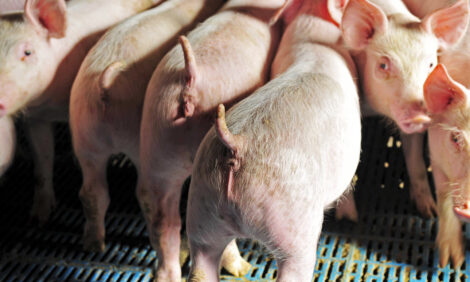



PRRS Control Measures in Place
IRELAND - Measures have been put in place to control Porcine Reproductive and Respiratory Syndrome (PRRS) since the virus was found at a breeding station earlier this month.In early April, it was confirmed that a major boar stud supplying boar semen to 70 per cent of the pig farms in the country tested positive for PRRS (also known as Blue Ear), according to Veterinary Ireland Journal. The problem now is that the virus is transmissible in the boar semen and that many of the herds inseminated during March are now testing positive for PRRS.
PRRS is a Class-A disease of pigs, present on the OIE list of scheduled and notifiable diseases.
According to the Journal, about 40 positive pig herds had been identified Ireland up to this recent infection. Stringent controls were in place to control the disease spread until now. These included the licensing of vaccine use in positive herds (available only under AR 16), stringent control on slurry spread and animal movements and a ban on exports of PRRS positive meat and animals to certain countries and markets. Strategic vaccination of at-risk farms was also recently introduced under a protocol from the Department of Agriculture, Food and the Marine (DAFM).
Reproductive signs in sows include late stage abortion (109-112 days), fever, inappetance, dysgalactia and increased peri-parturient and pre-weaning mortality. Respiratory signs include fever depression and anorexia in finisher and weaner pigs. In the presence of PRRS, other respiratory disease situations can be exacerbated and mortality can significantly increase.
Vaccines (both live and dead) are available and will be used extensively in the face of the outbreak.
Some farms have pulled the most recently served sows to external quarantine facilities for isolation in the hope that they will not have been infected or that infection will not have spread, according to the Journal. Repeat testing using ELISA and PCR will reveal the extent of the viral spread and decisions can then be made about the future plans for those sows.
The Irish pig industry did not need this challenge to its viability, reports Veterinary Ireland Journal. It has long been under pressure from the marketplace with average prices for 2012 of approximately €1.70kg deadweight versus in excess of €5 per kg for both sheep and cattle. Most pig farmers are bordering on viability on an ongoing basis. The world price for grain and soya bean meal has put them under ongoing pressure. Put the feed crisis on top of the recent requirements for sow stalls to be removed from pig production and add the current PRRS situation and we will regretfully see the demise of additional pig units and sows from production, according to the Journal. Although the Irish pig industry is vibrant and resilient, it predicted inevitable casualties from this disease break but the industry will survive and ultimately prosper.
Commenting on the PRRS situation, Hermitage Genetics reports that following a confirmed positive result for PRRS at its AI stud in Ireland on 5 April, the stud was immediately closed and isolated. The process of destocking the AI stud, sterilising and resting the premises, is well underway and restocking the stud with PRRS-negative boars will commence at the start of June.
Further ReadingFind out more information on Porcine Reproductive Respiratory Syndrome (PRRS) by clicking here. |






